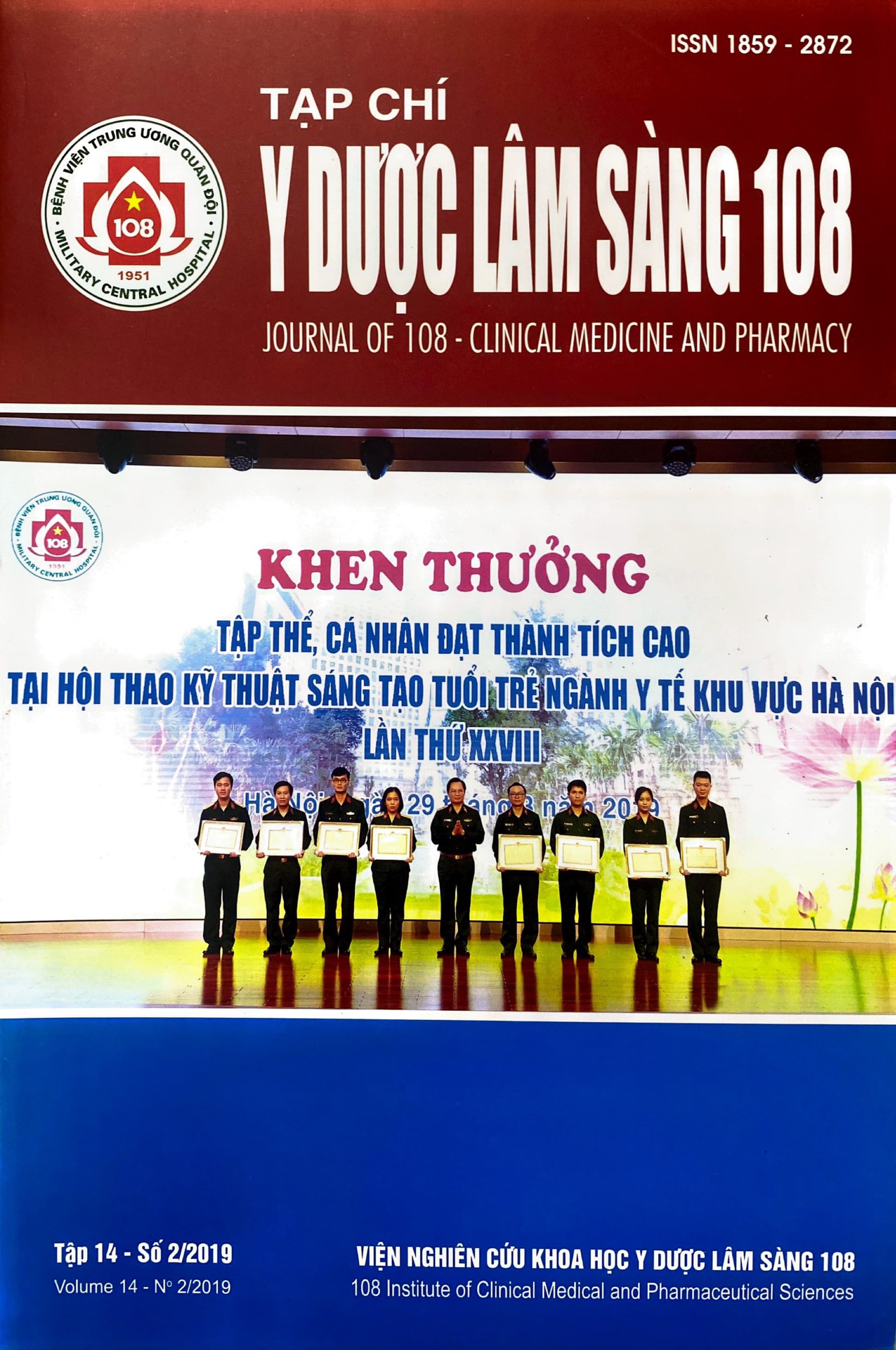Studying the role of respiratory resistance and reactance using forced oscillation technique in the diagnosis and stage classification of chronic obstructive pulmonary disease
Main Article Content
Keywords
Abstract
Objective: To assess the role of respiratory resistance and reactance using forced oscillation technique in the diagnosis and stage classification of chronic obstructive pulmonary disease (COPD) patients. Subject and method: The study has been done in 108 Military Central Hospital from September 2017 to November 2018, among 200 COPD patients, included 150 stable COPD patients and 50 patients with COPD exacerbation. Al blood tests, blood gas, ECG, echography had done for 200 patients. Respiratory resistance (Rrs5 and Rrs20) and reactance (Xrs5) and pulmonary function tests were measured by MostGraph-02 (Chest M.I., Co. Ltd., Tokyo, Japan) in 150 stable COPD patients. For 50 patients with COPD exacerbation, only respiratory resistance (Rrs5 and Rrs20) and reactance (Xrs5) were measured. Result: Parameters of pulmonary function tests had been decreased: FVC: 2.81 ± 0.52L, FEV1: 1.85 ± 0.34L, FEV1%: 53.10 ± 22.90%, FEV1/FVC: 52.42 ± 10.65%, PEF 25-75 (%): 22.56 ± 13.82%, PEF: 24.37 ± 14.91%. Respiratory resistance Rrs5 and Rrs20 were higher and reactance Xrs more negative in exacerbations COPD patients than in stable COPD patients. Rrs5 has moderate inverse correlation with FEV1, FEV1% (-0.542 và -0.573) and tight inverse correlation (r = -0.61) with FEV1/FVC. Xrs5 has moderate positive correlation with FEV1, FEV1% and FEV1/FVC (r = 0.492, 0.512, 0.559). R5 and R20 increase in severity of disease, X5 decrease in severity of disease. Conclusion: Respiratory resistance and reactance have a role in the diagnosis and stage classification of COPD.
Article Details
References
2. Global strategy for diagnosis management and prevention of COPD (2018).
http://www.goldcopd.org.
3. Goldman MD (2001) Clinical application of forced oscillation. Pulm Pharmacol Ther 14(5): 341-350.
4. Kurosawa H, Ohishi J, Shimizu Y et al (2010) A new method to assess lung volume dependency of respiratory system resistance using forced oscillation. Am J Respir Crit Care Med 181: 1240.
5. Landser FJ, Cle´ment J, Van de Woestijne KP (1982) Normal values of total respiratory resistance and reactance determined by forced oscillations: Influence of smoking. Chest 81: 586-591.
6. Masashi M, Toshihiro S, Kazutaka M et al (2014) Predictors of expiratory flow limitation measured by forced oscillation technique in COPD. BMC Pulmonary Medicine 14: 23.
doi:10.1186/1471-2466-14-23.
7. Mori K, Shirai T, Mikamo M et al (2011) Colored 3-dimensional analyses of respiratory resistance and reactance in COPD and asthma. COPD 8: 456-63.
8. Ohishi J, Kurosawa H, Ogawa H et al (2011) Application of impulse oscillometry for within-breath analysis in patients with chronic obstructive pulmonary disease: Pilot study. BMJ Open 1(2): 184.
 ISSN: 1859 - 2872
ISSN: 1859 - 2872
